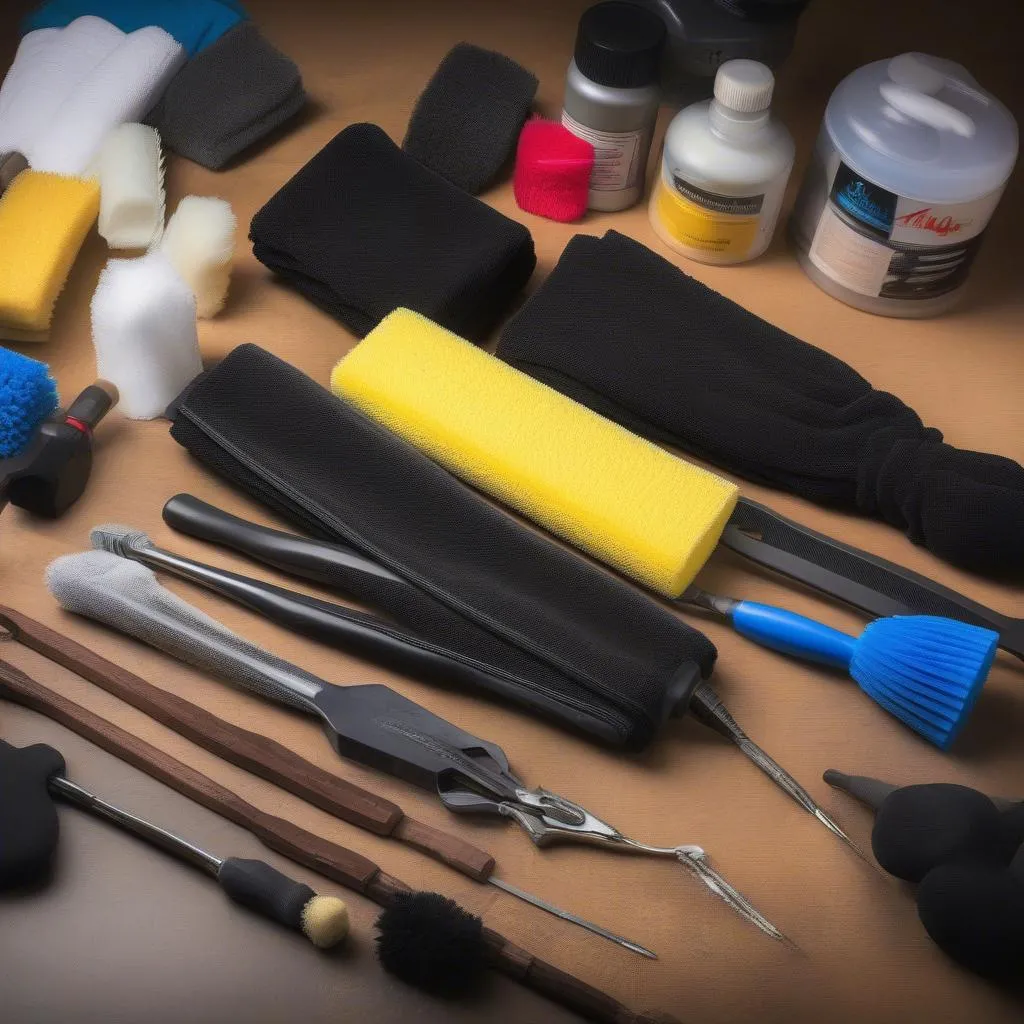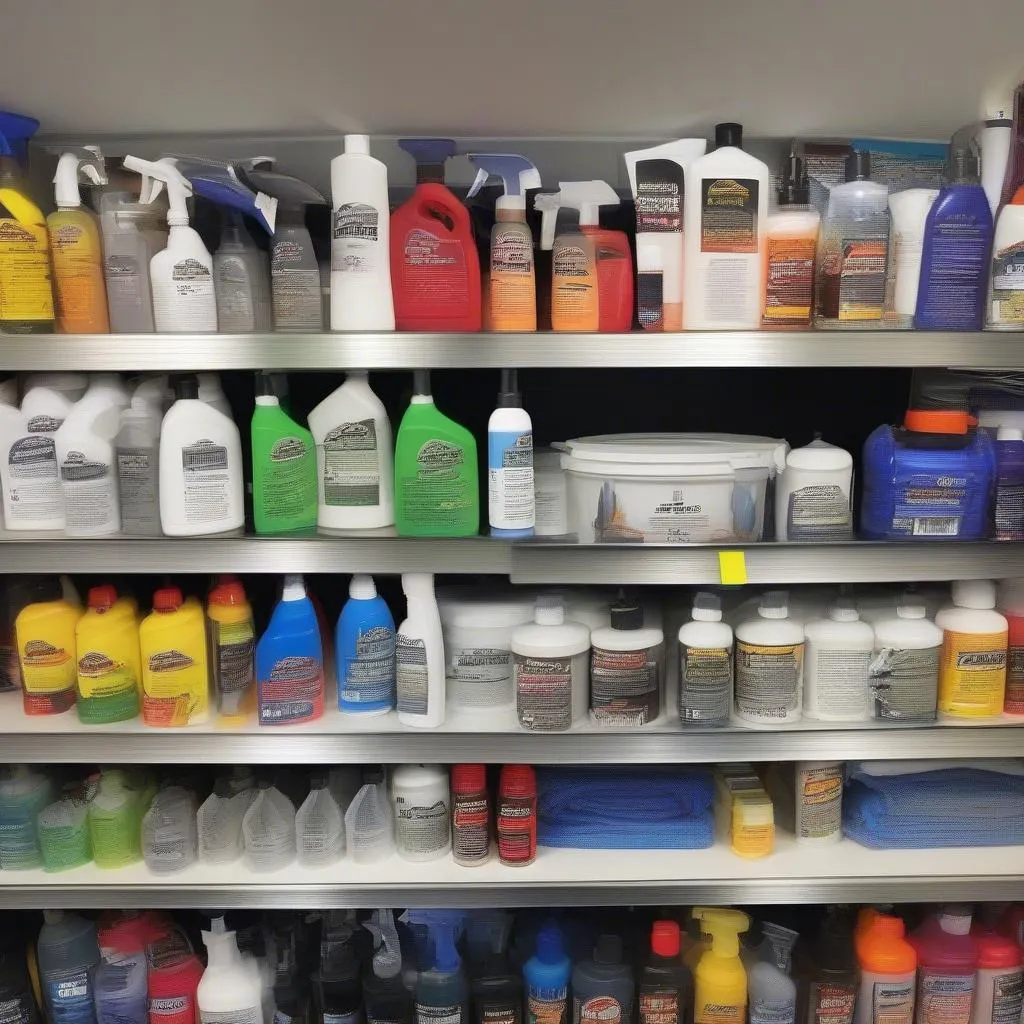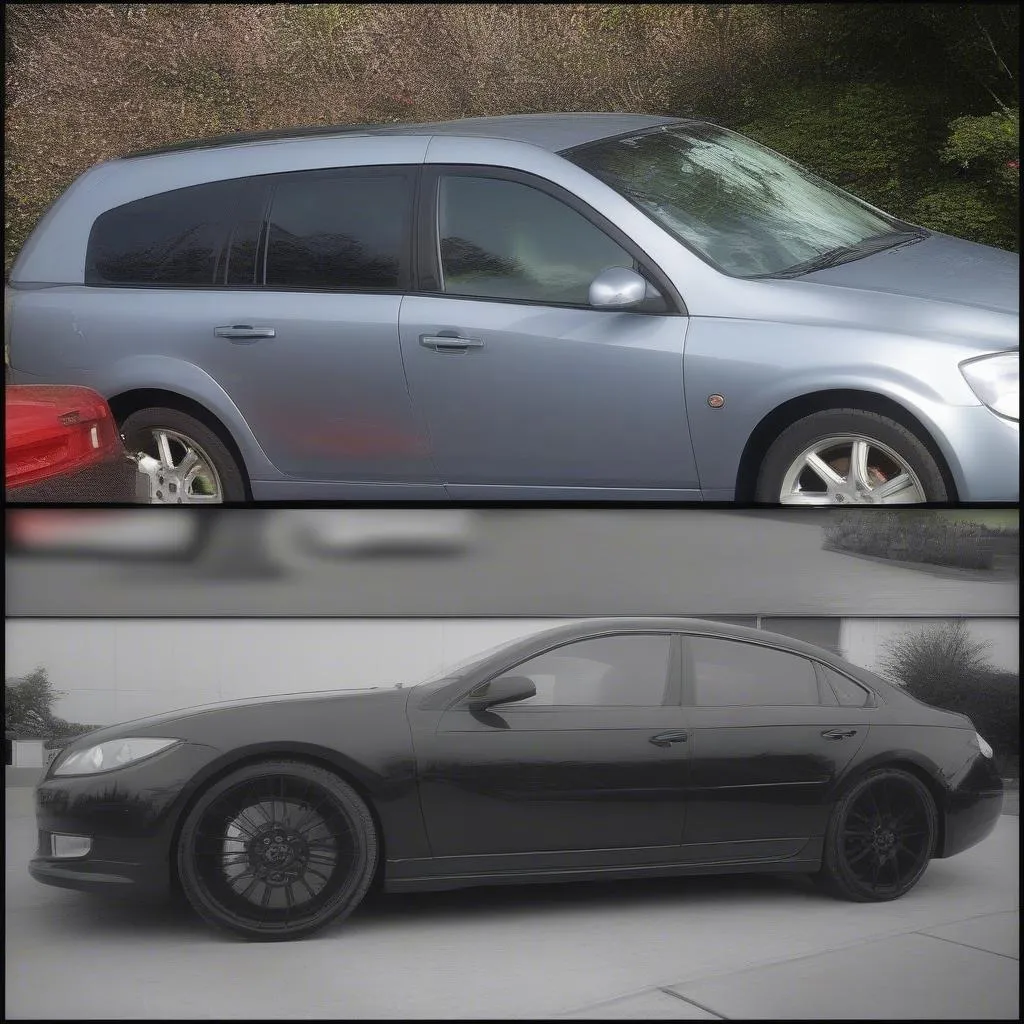Have you ever looked at your car and thought, “I wish this thing looked brand new again?” We’ve all been there. The daily grind of driving, parking, and exposure to the elements can take its toll on even the most pristine vehicles. But fear not, fellow car enthusiasts! Car detailing is the key to bringing back your car’s shine and preserving its beauty.
Understanding the Importance of Car Detailing
Think of car detailing as a spa day for your car. It’s not just about making your car look good, it’s about protecting it from damage and extending its lifespan. As Jeremy Jackson, a renowned car detailing expert, writes in his book “The Art of Car Detailing: A Comprehensive Guide“, “Car detailing is an investment in your vehicle’s longevity and aesthetic appeal.”
Here’s why car detailing is essential:
- Preserves the Paint: Dirt, grime, and environmental contaminants can etch into your car’s paint, causing scratches and dullness. Detailing removes these impurities, preserving the paint’s original shine and protecting it from further damage.
- Restores the Interior: Spills, dust, and wear and tear can leave your car’s interior looking tired and worn. Detailing cleans and protects the interior surfaces, bringing back that new car feel.
- Enhances Resale Value: A detailed car is a more appealing purchase. It demonstrates that you’ve taken care of your vehicle, potentially increasing its resale value.
Getting Started with Car Detailing: A Step-by-Step Guide
1. Preparation: Setting the Stage for a Detailing Success
Before you dive into the detailing process, you need to prepare your workspace. This includes:
- Choose a Suitable Location: Find a well-lit and ventilated area with enough space to work around your car. Ideally, you want a garage or a covered space, but a driveway can work too.
- Gather Your Supplies: You’ll need a variety of tools and products for car detailing, including:
- Washing Supplies: Car wash soap, microfiber wash mitts, a bucket, and a hose.
- Drying Supplies: Microfiber towels, chamois leather.
- Cleaning Supplies: Interior cleaner, leather cleaner, carpet cleaner, glass cleaner, and tire shine.
- Detailing Supplies: Clay bar, clay bar lubricant, polishing compounds, wax or sealant, and applicator pads.
- Protective Gear: Gloves, eye protection, and a mask.
2. Washing Your Car: The Foundation of a Great Detail
Washing your car is the first step in the detailing process and is crucial for removing loose dirt and debris. Here’s how to do it right:
- Pre-Rinse: Use a hose to rinse off your car thoroughly, removing loose dirt and debris.
- Wash with Soap: Fill your bucket with water and add car wash soap. Make sure you use a soap specifically designed for cars, as regular dish soap can strip your car’s wax.
- Wash Technique: Use two buckets: one for soapy water and one for clean rinse water. Dip your wash mitt into the soapy water, then wash your car in small sections, working from top to bottom. Regularly rinse your mitt in the clean water bucket to prevent dirt from scratching your paint.
- Rinse Thoroughly: Rinse your car thoroughly with clean water to remove all traces of soap.
3. Clay Bar Treatment: Smoothing Out Imperfections
A clay bar is a special type of cleaning product used to remove embedded contaminants that can’t be removed with washing alone. These contaminants can include tree sap, bird droppings, industrial fallout, and even road tar.
- Apply Lubricant: Spray clay bar lubricant onto the surface of your car. This helps the clay bar glide smoothly and prevents scratching.
- Work the Clay Bar: Knead the clay bar into a small, flat shape and rub it gently across the surface of your car.
- Check for Smoother Feeling: Repeat the process until the surface feels smooth and clay no longer picks up contaminants.
4. Polishing: Bringing Back the Shine
Polishing is an essential step in car detailing that removes fine scratches, swirls, and imperfections from your car’s paint.
- Choose the Right Compound: There are different types of polishing compounds, each with its own level of abrasiveness. For light scratches, use a fine polish. For deeper scratches, you’ll need a coarser polish.
- Apply with an Applicator Pad: Apply the polish to a clean applicator pad and work it into the paint in small, circular motions.
- Remove the Polish: Once the polish has dried, remove it with a clean microfiber towel.
5. Waxing or Sealing: Protecting Your Investment
The final step in car detailing is waxing or sealing your car’s paint. This creates a protective layer that repels water, dirt, and UV rays.
- Wax vs. Sealant: Wax is a natural product that provides a temporary layer of protection. Sealant is a synthetic product that provides a longer-lasting layer of protection.
- Apply in Thin Coats: Apply the wax or sealant to a clean applicator pad and work it into the paint in thin, even coats.
- Remove the Excess: Once the wax or sealant has dried, remove the excess with a clean microfiber towel.
6. Interior Detailing: Bringing Back the New Car Smell
Don’t forget about the interior! A clean and well-maintained interior can make a big difference in the overall look and feel of your car.
- Vacuum the Interior: Remove all loose dirt and debris from the carpets, seats, and floor mats.
- Clean Interior Surfaces: Use a dedicated interior cleaner to clean the dashboard, door panels, and console.
- Clean the Seats and Carpets: Use a carpet and upholstery cleaner to clean the seats and carpets.
- Clean the Windows and Mirrors: Use a glass cleaner to clean the windows and mirrors, inside and out.
Car Detailing FAQ: Addressing Common Questions
Q: How often should I detail my car?
A: The frequency of detailing depends on your driving habits and the environment you live in. As a general rule, you should detail your car at least twice a year.
Q: Can I detail my car myself, or should I take it to a professional?
A: You can certainly detail your car yourself, especially if you’re comfortable with DIY projects. However, professional detailers have access to specialized tools and products, and their expertise can make a big difference.
Q: What are some tips for maintaining a clean car?
A: * Wash your car regularly, especially after driving in harsh conditions.
- Dry your car after washing to prevent water spots.
- Use a quick detailer spray to touch up your car between washes.
- Avoid parking your car under trees, as bird droppings and tree sap can damage your paint.
Q: What are some popular car detailing products?
A: There are many different car detailing products available, but some of the most popular brands include:
- Meguiar’s
- Turtle Wax
- Mothers
- Chemical Guys
- Griot’s Garage
Conclusion: Unleash the Beauty of Your Car
Car detailing is an investment in your vehicle’s longevity and aesthetic appeal. By following the steps in this guide, you can keep your car looking its best, both inside and out.
Want to take your car detailing skills to the next level? We have a wealth of resources on our website, including articles, videos, and even product reviews.
Don’t hesitate to reach out to us via WhatsApp: +84767531508 for any questions or help with setting up your diagnostics tools. We’re here to help you achieve the ultimate car detailing experience!
 Car Detailing Tools
Car Detailing Tools
 Car Detailing Products
Car Detailing Products
 Car Detailing Before and After
Car Detailing Before and After